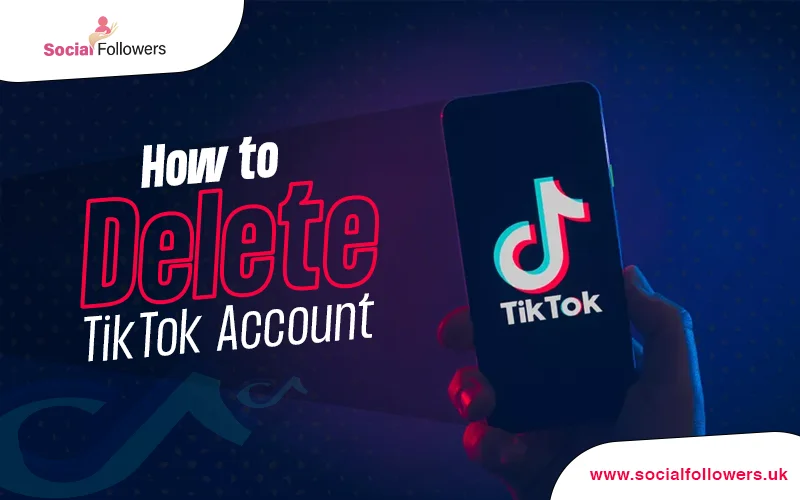X (Twitter) is still an essential platform for business marketing because it provides exceptional opportunities to engage with millions of people worldwide. On average, users spend 32 minutes per day on Twitter.
With millions of monthly active users, Twitter allows businesses to engage in real-time conversations, boost brand awareness, and drive customer engagement. It is categorized by rapid updates, multimedia content, and influential trends that shape consumer behavior.
Developing a robust X (Twitter) marketing strategy is required for businesses aiming to achieve specific objectives such as increasing brand visibility, generating leads, and enhancing customer loyalty.
Let’s explore what strategies you should use in Twitter marketing and the key features to utilize within Twitter’s platform.
What is X (Twitter) Marketing?
Twitter marketing is the art of using Twitter to promote your business and connect with potential customers. It’s a vigorous approach that involves creating and sharing content that resonates with your target audience. This content can range from informative blog posts and industry news to eye-catching visuals and interactive polls.
You can build relationships and establish your brand voice by engaging in conversations, responding to comments, and participating in trending discussions. Twitter marketing goes beyond just broadcasting messages; it’s about building community around your business and using unique features to drive website traffic, generate leads, and achieve your marketing goals.
How To Create Twitter Marketing Strategy For Businesses?
Take advantage of Twitter's power to meet your unique business goals. A key aspect of this strategy is the continuous monitoring and analysis of performance metrics to ensure the approach remains effective and adaptable to emerging trends and user behaviors. Here are the best Twitter marketing strategies:

1. Define Your Goals
Where do you want your Twitter presence to take you? Start by aligning your Twitter goals with your overall business objectives. Common goals include increasing brand awareness, driving website traffic, generating leads, and enhancing customer engagement. Make sure your goals are SMART:
S-Smart
M-Measurable
A-Achievable
R-Relevant
T-Time-bound
Clear goals provide direction, motivate your team, and allow you to measure success and make data-driven adjustments to your strategy. Make the necessary adjustments to your key performance indicators (KPIs) and plan your strategy accordingly.
2. Competitor Research
Competitor research is the process of analyzing your competitors' Twitter activity to gain insights into their strategies, strengths, and weaknesses. Identify your top competitors and examine their profiles, tweet frequency, engagement levels, and content types.
Look at what types of tweets get the most engagement, be they interact through retweets, comments, or Twitter likes. You can also use advanced search on Twitter to find exactly what you are looking for. Assess their use of hashtags, multimedia content, and interactions with followers. This information helps you identify industry trends. You can refine your strategy to differentiate your brand, capitalize on its weaknesses, and adopt successful practices.
3. Optimize Your Profile
Make a strong first impression and attract followers. Start with a clear, high-resolution profile picture, usually your company logo, and a header image that reflects your brand identity. Craft a concise and impactful bio that includes relevant keywords, a clear description of your business, and a link to your website or landing page.
Utilize Twitter’s pinned tweet feature to highlight important content or promotions. Consistently update your profile to reflect new campaigns or milestones. A well-designed profile enhances your brand's credibility and facilitates user engagement.
4. Curate Engaging Content
Twitter content marketing plan is all about sparking conversations. Go beyond self-promotion and create valuable content that your audience will find interesting. Share industry news, and behind-the-scenes content, post informative threads, or conduct fun polls. Mix various types of content, like text, tweets, images, videos, GIFs, and polls, to keep your feed attractive.
You can also use storytelling to create emotional connections and encourage interactions. Additionally, stay updated with trending topics and hashtags to join relevant conversations. Monitor your audience’s preferences and engagement metrics to refine your content strategy continuously.
5. Research Relevant Hashtags
Hashtags are powerful tools for expanding your reach. Research popular hashtags relevant to your industry and target audience. Select a mix of broad and niche hashtags to target both a wide and specific audience. Analyze the performance of hashtags used by competitors and influencers to identify which ones drive the most engagement.
Don’t just stuff your tweets with generic ones, instead, use a strategic mix of high-volume and niche hashtags to get your content seen by the right people. Regularly update your hashtags based on current trends and analytics.
6. Analyze Posting Times
Time is everything on Twitter. Identify the peak time to post on Twitter when your audience is most active to maximize the reach and engagement of your tweets. Experiment with posting at different times of the day and week to determine peak engagement periods.
Prioritize time zones even better if you consider the best time by industry, which could be restaurant, education, lifestyle, food, etc. If you have a global audience, ensure your content reaches as many people as possible. Consistently monitor and adjust your posting schedules based on performance data. These optimal times ensure your tweets get the highest visibility, enhancing interaction rates and overall campaign effectiveness.
7. Encourage User-Generated Content
People trust recommendations from others as credible and honest feedback. UGC content involves motivating followers to create and share content related to your brand. It includes customer reviews, testimonials, photos, and videos of them using your products or services.
Run contests, challenges, or campaigns that invite users to participate and use specific hashtags. You should highlight and share UGC on your profile. It adds authenticity and trust to your brand, as it showcases real customer experiences. It also increases engagement, as people are more likely to interact with content created by their peers.
8. Collaborate With Influencers
Partnering with relevant influencers can give your brand a significant boost and establish your credibility on Twitter. Identify influencers in your industry whose followers align with your target audience. Reach out to them with a clear proposal outlining mutual benefits, such as increased exposure for both parties.
According to Gartner, 84% of millennials claim that unfiltered user-generated content (UGC) from strangers influences their purchasing decisions in some way. Collaborations can take various forms, including sponsored tweets, giveaways, product reviews, or Twitter takeovers. Ensure the content created aligns with your brand voice and messaging. Effective influencer collaborations can boost brand visibility and attract new Twitter followers.
9. Consistent Posting Schedules
Stay visible and keep your audience engaged by maintaining a consistent posting schedule. Plan your content using a content calendar, scheduling tweets at regular intervals throughout the day and week. Consistency helps build anticipation and trust among followers, ensuring they know when to expect new content.
Aim for a frequency that works for your resources, but be mindful not to overwhelm your followers. You can utilize scheduling tools to plan your content calendar. Regular posting keeps your brand visible among followers' feeds, encourages ongoing engagement through continued interaction, and retains followers.
10. Use The 80/20 Rule
The 80/20 rule, also known as the Pareto Principle in Twitter marketing, suggests that 80% of your results come from 20% of your efforts. The majority (80%) of your tweets should focus on sharing informative, entertaining, or inspiring content, such as industry news, tips, user-generated content, and community interactions.
The remaining 20% can directly promote your products or services, including special offers, announcements, and calls to action. This balance ensures that you provide value and maintain audience interest without overwhelming followers with sales pitches.
4 Key Features To Utilize in Twitter Marketing
Occasional tweets indeed play an important role, but when it comes to marketing, you should practically use the features that already exist on Twitter’s platform. Here are some of the most visible yet helpful features to consider when creating a Twitter organic marketing strategy:

1. Twitter Trends
When a specific topic, word, phrase, or hashtag becomes popular and everyone starts talking about it, then it becomes a “Trending Topic” or a “Trend”. Twitter is all about staying relevant and informative, especially in the meantime.
Marketers should take an active part in the discussions and curate content that is related to the trend but aligns with your brand identity. Using hashtags can strategically increase your exposure and introduce your brand to a wider audience engaged with that trend.
2. Twitter Communities
Twitter Communities are groups centered around specific interests or topics, allowing users to join conversations that matter to them. For businesses, participating in or creating a Twitter community can introduce your brand to a new audience and increase Twitter views and reach.
It provides a space for more focused and meaningful interactions, where you can share your expertise, answer questions, and build stronger connections with potential customers. Gather valuable feedback and build a loyal follower base to establish your authority in your niche.
3. Twitter Spaces
Twitter Spaces is a live audio-only feature that enables interactive conversations or interviews. Businesses can use spaces to host discussions, webinars, Q&A sessions, and live events. They can also invite industry experts, collaborate with influencers, or answer questions directly from your audience in real time.
It is indeed an excellent tool for a more personal connection with your followers, showcasing thought leadership, addressing audience queries, and enhancing brand presence through engaging audio content.
4. Twitter Lists
Twitter/X Lists allow users to organize and categorize accounts into specific groups, making it easier to monitor and engage with relevant content. For businesses, creating lists of industry influencers, competitors, partners, and customers can streamline the process of tracking important tweets and conversations.
This feature helps in staying informed about industry trends, engaging with key stakeholders, and finding opportunities for collaboration. Utilize these lists to tailor your content and reach the right audience with the right message.
In a Nutshell
A Twitter marketing strategy is your roadmap to success on the platform. It's a comprehensive plan that goes beyond simply posting tweets. Twitter marketing assists brands in maintaining relevance, responding to customer feedback, and building stronger connections with loyal audiences. It can make your business stand out among millions seeking an online presence.
Writer's Bio
Hafsa has been working as a writer and blogger for over 3 years. She's got a knack for writing engaging content that hits the sweet spot, especially in Digital Marketing, Big Tech Industry, and AI. When she's not glued to her writing desk, you might find her sketching beautiful portraits or preparing her favorite coffee in the kitchen.





